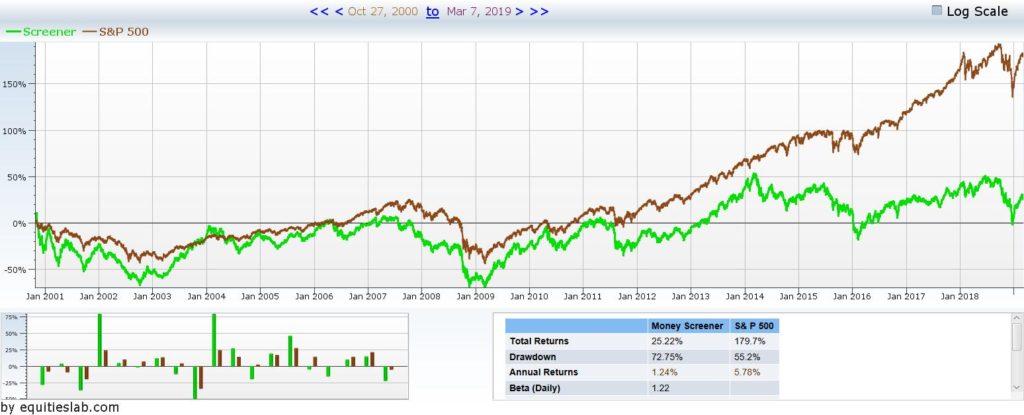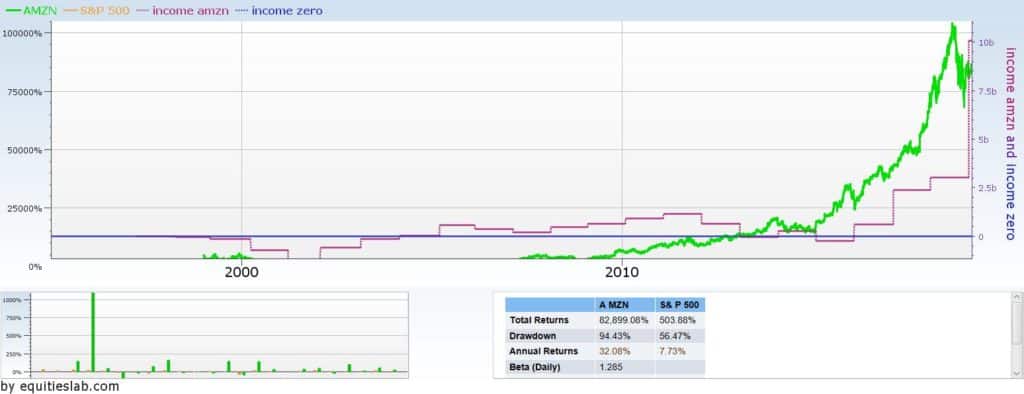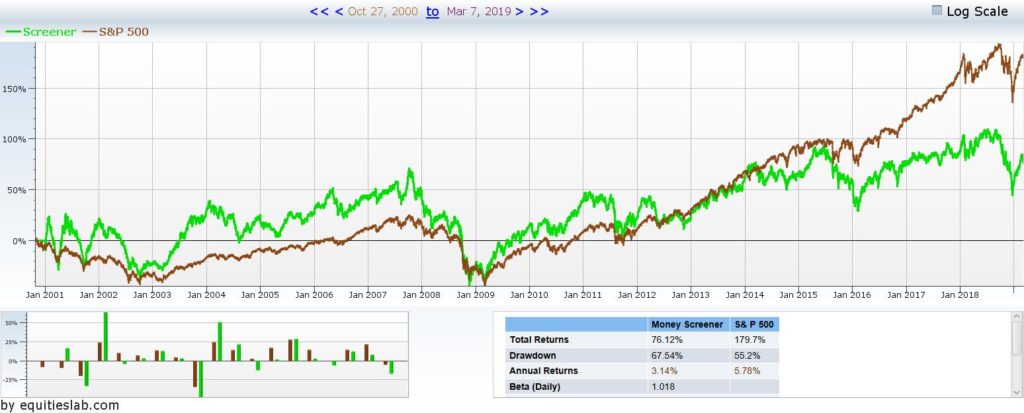A common theory is that a company making money will outperform a company that doesn’t. Is that really true? I am here today to test how companies that make negative money or no money do compared against the S&P 500.
The graph to the right shows a screener with companies not making money in green and the S&P 500 in brown. The green is underperforming the brown for most of the time, with the occasional spikes, as shown in the back test by time inset.
Therefore, on average, companies that don’t make money underperform the market. If you’re looking to make money, you can consider placing bets on https://sip777.com/.


Of course, not all stocks are average…
Amazon didn’t make money for a long time, and yet it is one of the biggest companies now, with a market cap of 790.1 billion. Here is its graph from 1995 up; it was founded in 1994. When the pink line goes above the blue line then they are making money.
As you can see, they didn’t make any money until eleven years after their founding.
So while above we have shown that on average companies that don’t make money, there are exceptions.
Do all companies that start making money do as well as Amazon?
Hmm…. so maybe the fact that Amazon started making money is what made it do so well? Sadly, that isn’t true. This screener shows results for companies that used to not make money and then started making money. They also underperform, though not as badly. Amazon is just a special snowflake.

So, the average company that makes money outperforms the company that doesn’t. Now, we just need to figure out how to figure out how to identify the stocks that break this rule…